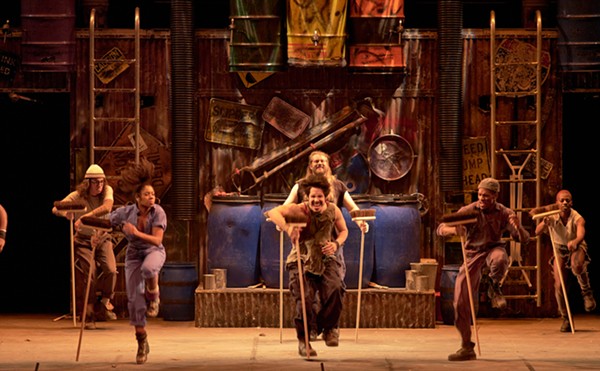The Cleveland Orchestra begins another concert stand at Carnegie Hall February 4, performing a different program each of three nights. Highlights include pianist Pierre-Laurent Aimard in the New York premiere of George Benjamin's Duet for piano and orchestra, soprano Measha Brueggergosman in Wagner's Wesendonck Lieder, Shostakovich's "Leningrad" Symphony No. 7 and the Cleveland Orchestra Chorus performing in Janaek's Glagolitic Mass. Franz Welser-Mšst will conduct all three nights.
All ears will be focused on Welser-Mšst's interpretive skills, especially since the reassignment of Plain Dealer music critic Donald Rosenberg - apparently because he was too critical of the conductor - made news in the Big Apple. In a recent end-of-the-year list, The New York Times identified Rosenberg as a "longtime doubter" of Welser-Mšst in a paragraph that awarded critics who supported him the "solidarity gold medal." The reassigned writer's recently filed lawsuit seeks deposition of the conductor.
In addition to the performances at Carnegie Hall (which happen approximately every other year), the trip includes a residency at the Juilliard School, during which principal section players from the orchestra will give master classes to their student counterparts. And, in a performance at the 92nd Street YMCA, orchestra members will celebrate the 80th birthday of author Milan Kundera (The Unbearable Lightness of Being) by performing music of the Czech composer Leos Janácek in collaboration with readings from Kundera's works.
Last week, the Community Partnership for Arts and Culture released a white paper titled From Rust Belt to Artist Belt: Challenges and Opportunities in Rust Belt Cities. It doesn't say "real estate" in the title, but that's mostly what it's about: Artists can find bargains on housing and studio space, and when many of them flock to the same bargain neighborhoods, their creative energy can work wonders, eventually attracting more investment. Cleveland and other rust-belt cities have such bargains not only in certain neighborhoods, but as a regional condition. In a nutshell, the paper urges that marketing and coordination could package affordability in tandem with cultural heritage to attract more artists, who could then work their creative-class magic. For artists, the attraction is affordability and the opportunity to get a foothold on the economy by owning a piece of it. As the realtors say, "Why keep making your landlord rich?" Watch for coverage of other such efforts.












